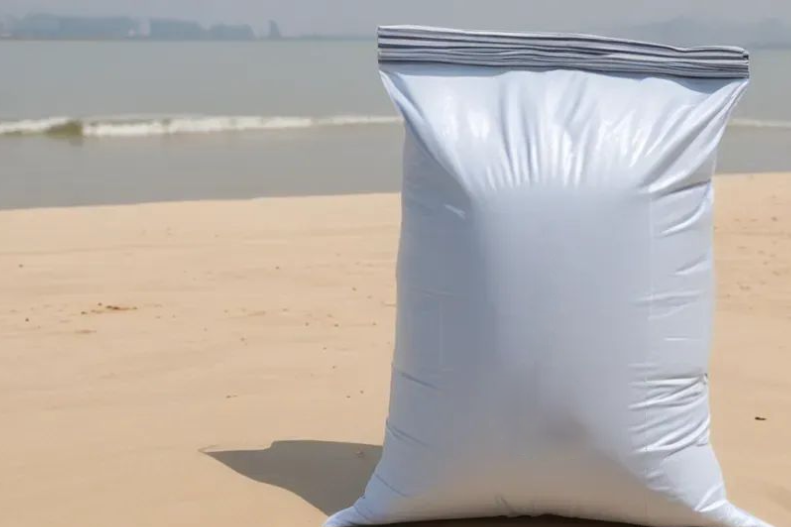Sandbags are versatile tools used in a variety of applications, from flood control and erosion prevention to the construction and building of temporary shelters.
Choosing the right size sandbag is crucial to ensure optimal performance and effectiveness for your specific needs.
Whether you’re a homeowner preparing for floods, or a contractor on a construction site, here’s a comprehensive guide to help you select the perfect size sandbag.
Determine Your Purpose
Before selecting a sandbag size, identify the primary purpose for which you’ll be using it.
If you’re using sandbags to protect your property from flooding or erosion, consider the size of the area you need to cover and the height of the barrier required.
On construction sites or for heavy-duty tasks, select sandbags that can withstand the weight and pressure of the materials they’ll be used to contain or stabilize.
Choose the Type of Sandbags:
Choosing the right sandbag can be tricky because there are so many types. But it’s not impossible!
First, think about what you need the sandbag for.
Are you going to use it outside a lot? If so, you need one that can handle sunlight well. If you’re only going to use it once, you might not need a super strong one. But you still want one that won’t rip as soon as you fill it.
Most people know about burlap sandbags. They’re cheap and easy to find. They’re not as strong as plastic ones, but they’re better for the environment. In fact, they can be used to store things like holding flour or animal food. Just make sure to store them empty and only fill them when it is required.
Plastic sandbags, like the ones made of polypropylene, are really strong. They’re good for blocking moisture and are often used for flood control. They’re also great for military bunkers because they’re tough and lightweight. But if you’re worried about the environment, they’re not biodegradable.
If you want something super durable, nylon sandbags are the way to go. They’re coated to repel water and can handle a lot of wear and tear. Boxers and athletes use them for training because they’re so tough.
Once you know what you need, think about the shape and size of the sandbag. There are lots of options, like saddle, butterfly, tube, and small marker sandbags. Each one is good for different things, so pick the one that fits your needs best.
Assess Weight Requirements
Ensure the sandbag can support the weight of the materials it will contain or stabilize. This includes sand, gravel, construction debris, or fitness equipment.
Choose the Sizes:
Sandbags are commonly available in standard sizes ranging from small to large. Standard sizes are convenient for general-purpose use and can be easily stacked or arranged to create barriers or walls.
For specialized applications or unique requirements, consider ordering custom-sized sandbags. Custom sizes allow you to tailor the sandbag dimensions to fit your specific needs more precisely.
Evaluate Durability and Construction:
Opt for sandbags made from high-quality materials such as woven polypropylene or heavy-duty canvas. These materials are durable and resistant to tearing, punctures, and abrasions.
Inspect the seams and stitching of the sandbag to ensure they are reinforced and securely sealed. Double-stitched seams are preferable for added strength and longevity.
Consider the Closure System:
When selecting sandbags, prioritize a dependable closure system. The closure plays a pivotal role in preventing sand leakage and preserving the bag’s integrity.
Opt for closures like ties, Velcro, or zippers, ensuring they are easy to use and capable of withstanding the sand’s pressure.
A secure closure guarantees peace of mind, maintaining the bag’s effectiveness in various applications.
Choose Between Filled and Unfilled Sandbags:
When deciding between filled and unfilled sandbags, consider the nature of your task. Filled sandbags are ready-made and readily available, but they can be heavy and prone to splitting. Unfilled sandbags, on the other hand, allow for flexibility and can be filled with the desired level of content.
While unfilled sandbags may require additional effort to fill, they offer the advantage of being lighter and easier to handle.
Additionally, filling the bags yourself allows you to customize the amount and type of sand used, ensuring optimal performance for your specific needs. Ultimately, the choice between filled and unfilled sandbags depends on your preferences, the nature of your task, and the level of convenience and control you desire.
Whether you opt for convenience or customization, both options offer effective solutions for a variety of applications, from flood control to construction projects.
Learn from Real Life Stories:
To understand how well sandbags work, you can read about real-life stories. These stories are called case studies. They show how people used sandbags in projects like yours. You can see which sandbags they used and how they worked. You can also learn about any problems they had. Learning from these stories can help you choose the best sandbags for your project. It’s like getting advice from people who already tried it. So, before you pick sandbags, take some time to read and learn from others’ experiences.
Test and Experiment:
Last but not least, don’t hesitate to experiment with different sizes and weights of sandbags. It will help you find the right one for your purpose.
The Bottom Line:
Choosing the right size sandbag for your needs requires careful consideration of your purpose, weight requirements, size and dimensions, durability, and construction quality.
By assessing these factors and experimenting with different options, you can select a sandbag that meets your specific needs and delivers optimal performance and effectiveness.





